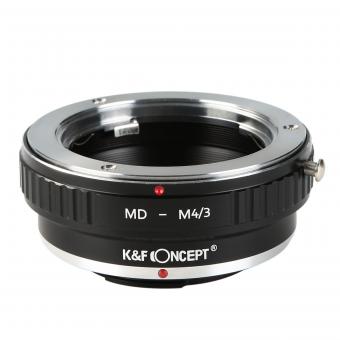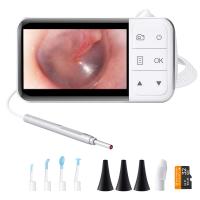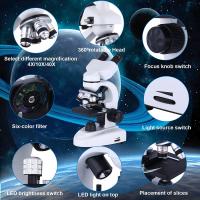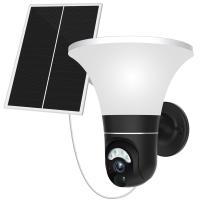How To Repair Microscope ?
The process of repairing a microscope depends on the specific issue that needs to be addressed. Some common problems include misaligned lenses, broken or loose parts, and electrical issues. To repair a microscope, one should first identify the problem and then consult the manufacturer's instructions or seek the advice of a professional technician. In some cases, simple adjustments or replacements of parts may be sufficient to fix the issue. However, more complex repairs may require specialized tools and expertise. It is important to handle the microscope with care and follow proper safety procedures when attempting any repairs.
1、 Cleaning and Maintenance

Cleaning and Maintenance:
Microscopes are delicate instruments that require regular cleaning and maintenance to ensure their optimal performance. Here are some steps to follow for cleaning and maintaining your microscope:
1. Clean the lenses: Use a soft, lint-free cloth to clean the lenses. Avoid using paper towels or tissues as they can scratch the lenses. If there is stubborn dirt or debris on the lenses, use a lens cleaning solution and a lens cleaning tissue.
2. Clean the body: Use a soft, damp cloth to clean the body of the microscope. Avoid using harsh chemicals or abrasive materials as they can damage the microscope.
3. Check the light source: Make sure the light source is working properly. If the light is dim or flickering, replace the bulb.
4. Lubricate moving parts: Lubricate the moving parts of the microscope with a drop of oil to ensure smooth movement.
5. Store properly: Store the microscope in a dry, dust-free environment. Cover it with a dust cover when not in use.
It is important to note that different types of microscopes may require different cleaning and maintenance procedures. Always refer to the manufacturer's instructions for specific guidelines.
In addition, with the ongoing COVID-19 pandemic, it is important to regularly disinfect the microscope using a disinfectant solution recommended by the manufacturer. This will help prevent the spread of the virus and ensure the safety of users.
2、 Replacing Damaged Parts

How to repair microscope:
Microscopes are delicate instruments that require proper care and maintenance to function effectively. If your microscope is not working correctly, there are a few steps you can take to repair it.
1. Clean the lenses: The first step in repairing a microscope is to clean the lenses. Use a soft, lint-free cloth to wipe the lenses gently. Avoid using harsh chemicals or abrasive materials that can scratch the lenses.
2. Check the light source: If the microscope is not illuminating the sample correctly, check the light source. Make sure the bulb is not burnt out and that the wiring is intact.
3. Adjust the focus: If the microscope is not focusing correctly, adjust the focus knob. If this does not work, check the stage height and make sure it is adjusted correctly.
4. Replacing damaged parts: If the microscope has a damaged part, such as a cracked lens or a broken stage, it may need to be replaced. Contact the manufacturer or a microscope repair specialist to order the replacement part.
In recent years, there has been a growing trend towards DIY microscope repair. While it is possible to repair some minor issues yourself, it is important to remember that microscopes are complex instruments that require specialized knowledge and tools. Attempting to repair a microscope without the proper training can cause further damage and may even be dangerous. If you are unsure about how to repair your microscope, it is best to seek the help of a professional.
3、 Adjusting Focus and Alignment

Adjusting Focus and Alignment is one of the most common repairs that need to be done on a microscope. To begin, make sure that the microscope is properly set up and that all of the components are in good working order. Once this is done, you can begin to adjust the focus and alignment of the microscope.
To adjust the focus, start by looking through the eyepiece and turning the focus knob until the image is clear. If the image is still blurry, adjust the focus knob until the image is sharp. If the image is still not clear, you may need to adjust the objective lens.
To adjust the alignment, start by looking through the eyepiece and adjusting the stage until the image is centered. If the image is still off-center, adjust the condenser until the image is centered. If the image is still not centered, you may need to adjust the objective lens.
It is important to note that different types of microscopes may require different methods of adjusting focus and alignment. Additionally, some microscopes may require specialized tools or expertise to properly repair. If you are unsure about how to repair your microscope, it is best to consult a professional or the manufacturer's instructions.
In recent years, there has been a growing trend towards digital microscopes, which use digital cameras and software to capture and analyze images. These microscopes often have built-in autofocus and alignment features, which can make them easier to use and maintain. However, they may also require specialized software or training to properly operate and repair.
4、 Lubrication and Calibration

How to repair microscope:
Microscopes are delicate instruments that require proper care and maintenance to function effectively. If your microscope is not working correctly, there are a few steps you can take to repair it.
1. Identify the problem: The first step in repairing a microscope is to identify the problem. Is the image blurry? Is the focus knob not working? Is the light source not functioning correctly? Once you have identified the issue, you can move on to the next step.
2. Lubrication: One common issue with microscopes is that they can become stiff or difficult to move. This is often due to a lack of lubrication. To fix this, you can apply a small amount of lubricant to the moving parts of the microscope. Be sure to use a lubricant that is safe for use on microscopes.
3. Calibration: Another common issue with microscopes is that they can become misaligned or out of calibration. This can cause the image to be blurry or distorted. To fix this, you will need to recalibrate the microscope. This can be done by adjusting the focus and alignment of the lenses.
4. Latest point of view: With the advancement of technology, some microscopes now come with digital components that require specialized knowledge to repair. In such cases, it is best to seek the help of a professional technician who has experience in repairing digital microscopes.
In conclusion, repairing a microscope requires patience, attention to detail, and a basic understanding of how the instrument works. By following the steps outlined above, you can fix common issues with your microscope and ensure that it continues to function effectively for years to come.





























There are no comments for this blog.